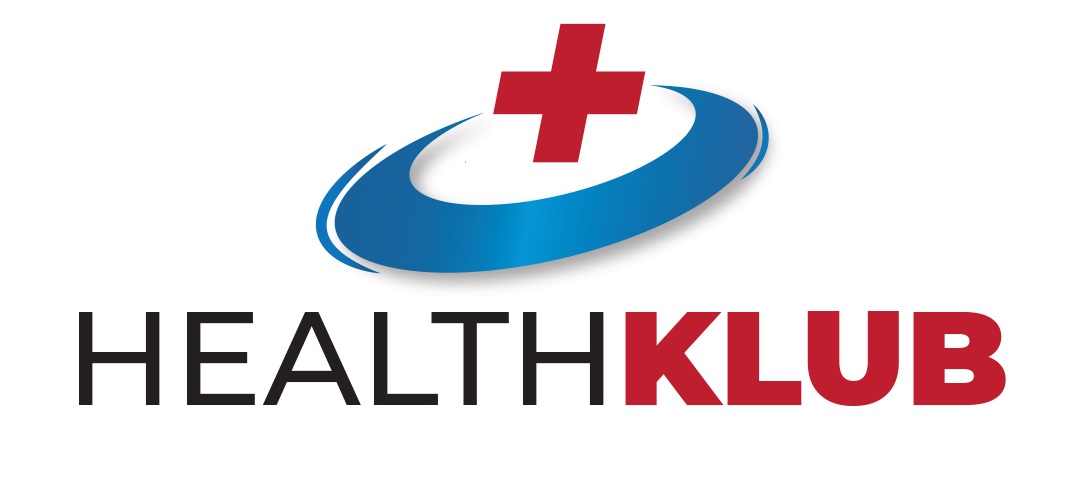Introduction
In the quest for achieving and maintaining a healthy body, intermittent fasting has emerged as a powerful tool for those seeking effective and sustainable fat loss. This dietary approach, characterized by strategic periods of fasting and eating, has garnered immense popularity due to its potential to optimize metabolism, enhance fat-burning mechanisms, and improve overall well-being. To embark on a successful journey toward burning fat while intermittently fasting, it is essential to understand the principles, strategies, and science behind this method. This comprehensive guide aims to equip you with everything you need to know to unlock the potential of intermittent fasting as a practical and sustainable means of shedding excess weight and achieving your fitness goals.
Understanding Intermittent Fasting
Intermittent fasting is a dietary approach that doesn’t focus on the specific foods you consume but rather on when you eat them. By strategically timing your meals and fasting periods, it aims to optimize your body’s metabolic processes and promote fat loss. To better understand intermittent fasting, let’s delve into some of the most common methods:
16/8 Method:
This method involves fasting for 16 hours and limiting your eating to an 8-hour window each day. For example, if you start eating at noon, you would conclude your meals by 8 PM and then fast until the next day at noon. During the fasting period, you typically abstain from consuming calories, although water, tea, and black coffee are usually allowed.
5:2 Diet:
In this approach, you maintain a regular eating pattern for five days a week, consuming your usual calorie intake. On the remaining two non-consecutive days, you drastically reduce your calorie intake to around 500-600 calories. These low-calorie days are often referred to as “fasting days.” It’s essential to choose nutrient-dense foods during these fasting days to ensure you still get essential nutrients.

Eat-Stop-Eat:
With the Eat-Stop-Eat method, you undertake a complete 24-hour fast once or twice a week. This means you abstain from consuming any calories during the fasting period. For example, if you finish dinner at 7 PM, you wouldn’t eat again until 7 PM the next day. This method can be challenging for beginners due to the extended fasting duration.
Alternate-Day Fasting:
Alternate-Day Fasting involves cycling between fasting days and regular eating days. On fasting days, you significantly reduce calorie intake or abstain from food entirely, while on non-fasting days, you eat as you typically would. This approach can vary in intensity, with some people opting for complete fasting on fasting days and others choosing a limited-calorie intake.
Warrior Diet:
The Warrior Diet involves eating small amounts of raw fruits and vegetables during the day (often referred to as a “fasting window”) and having one large meal at night (the “feasting window”). This method typically includes a 20-hour fasting window followed by a 4-hour feasting window. It emphasizes whole, unprocessed foods during the feasting period.
Intermittent fasting can offer various benefits, including improved insulin sensitivity, enhanced fat oxidation, and potential weight loss. However, it’s crucial to choose a method that aligns with your lifestyle and consult with a healthcare professional before starting any fasting regimen, especially if you have underlying health conditions or are pregnant/nursing. Understanding the different intermittent fasting methods empowers you to make an informed choice and tailor your approach to your individual needs and goals.
How Intermittent Fasting Burns Fat
Intermittent fasting is a dietary approach that triggers a cascade of physiological processes in the body, all of which contribute to the efficient burning of stored fat. Understanding how intermittent fasting achieves this fat-burning effect can shed light on why it has become a popular strategy for weight management and overall health.
Insulin Sensitivity:
One of the primary mechanisms through which intermittent fasting promotes fat burning is by enhancing insulin sensitivity. When you fast, especially for extended periods, your body’s insulin levels drop significantly. This decrease in insulin allows your body to access stored fat more readily for energy. Insulin is a hormone that regulates blood sugar levels and promotes fat storage when it’s elevated. Lower insulin levels make it easier for your body to tap into fat reserves, leading to increased fat utilization.
Growth Hormone Release:
Intermittent fasting also triggers an increase in the secretion of growth hormone. Growth hormone plays a vital role in fat metabolism and muscle preservation. When growth hormone levels rise, your body becomes more efficient at breaking down fat stores for energy, particularly during the fasting period. This can help preserve lean muscle mass while encouraging the utilization of fat as a fuel source.
Cellular Autophagy:
Another key process initiated by intermittent fasting is cellular autophagy. Autophagy is the body’s way of cleaning up and recycling damaged or dysfunctional cellular components. During fasting, especially extended fasts, the body activates autophagy to break down and remove these components. This includes the breakdown of fat stores within cells, contributing to fat loss.

Increased Norepinephrine:
Intermittent fasting can elevate norepinephrine levels in the body. Norepinephrine is a hormone and neurotransmitter that plays a role in the “fight or flight” response. Elevated norepinephrine levels stimulate the breakdown of fat cells, a process known as lipolysis. This means that fasting can enhance the breakdown of fat cells, releasing fatty acids into the bloodstream for energy production.
In summary, intermittent fasting harnesses several interconnected mechanisms to facilitate fat burning. By improving insulin sensitivity, promoting the release of growth hormone, inducing cellular autophagy, and increasing norepinephrine levels, intermittent fasting creates an environment in which the body is more efficient at utilizing stored fat for energy. This comprehensive approach to fat loss not only helps shed excess weight but may also offer additional health benefits, including improved metabolic health and enhanced cellular repair processes. However, it’s important to note that intermittent fasting may not be suitable for everyone, so consulting with a healthcare professional before starting any fasting regimen is advisable.
Tips for Effective Fat Burning During Intermittent Fasting
Achieving effective fat burning during intermittent fasting requires a combination of strategic dietary choices and lifestyle habits. Here’s a detailed explanation of the key tips for optimizing fat loss while practicing intermittent fasting:
Stay Hydrated:
Adequate hydration is essential for overall health and plays a crucial role in supporting your metabolism, especially during fasting periods. Drinking water helps maintain bodily functions, aids in digestion, and ensures that your body can efficiently use stored fat for energy. Aim to drink plenty of water throughout the day, particularly during fasting periods, to stay hydrated.
Choose Nutrient-Dense Foods:
When you do eat, prioritize nutrient-dense foods that provide essential vitamins and minerals. Opt for whole grains, lean proteins, fruits, vegetables, and healthy fats. These foods not only help satisfy your nutritional needs but also keep you feeling fuller for longer, reducing the temptation to overeat during your eating windows.
Exercise:
Incorporating a well-rounded exercise routine is vital for effective fat burning and overall health. Both aerobic (cardio) and strength training exercises are beneficial. Aerobic exercises, such as running or cycling, help burn calories and promote fat loss, while strength training helps preserve lean muscle mass. Maintaining muscle mass is crucial because it increases your resting metabolic rate, helping you burn more calories even at rest.
Limit Sugary and Processed Foods:
During your eating windows, avoid sugary and highly processed foods. These items can cause rapid spikes and crashes in blood sugar levels, making it more challenging to control hunger and cravings. Moreover, they can counteract the benefits of intermittent fasting by promoting fat storage rather than fat burning. Instead, focus on whole, unprocessed foods to support your fasting goals.
Get Enough Sleep:
Prioritize getting adequate sleep as it plays a significant role in regulating hormones and supporting fat-burning processes. Sleep deprivation can lead to imbalances in hunger hormones, such as ghrelin and leptin, which may increase your appetite and cravings for unhealthy foods. Aim for 7-9 hours of quality sleep per night to optimize your body’s fat-burning potential.
Listen to Your Body:
Pay attention to your body’s hunger cues and adjust your fasting schedule accordingly. If you’re genuinely hungry during your fasting window, it’s okay to shorten the fasting period or consume a small, healthy snack to satisfy your hunger. The key is to find a balance that works for your individual needs and lifestyle while still adhering to the principles of intermittent fasting.
Be Consistent:
Consistency is crucial when practicing intermittent fasting. Stick to your chosen fasting schedule to see long-term results. It may take time for your body to adapt to this new eating pattern, so remain patient and stay committed to your goals. Over time, you’re likely to experience the full benefits of intermittent fasting, including effective fat burning and improved metabolic health.
By incorporating these tips into your intermittent fasting routine, you can enhance your body’s fat-burning capabilities and work toward achieving your desired health and fitness goals. Remember that intermittent fasting is not a one-size-fits-all approach, so it’s essential to tailor it to your individual needs and preferences for the best results.
Safety and Precautions
Safety and precautions are of paramount importance when considering any fasting regimen, including intermittent fasting. While intermittent fasting can offer numerous health benefits, it may not be appropriate for everyone, and there are specific precautions to keep in mind:

Consult with a Healthcare Professional:
Before embarking on an intermittent fasting journey, it is essential to consult with a healthcare professional, such as a doctor or registered dietitian, especially if you have underlying health conditions or are taking medications. They can assess your individual health status and provide guidance on whether intermittent fasting is safe and appropriate for you.
Individualization of Fasting Plan:
It’s crucial to tailor your intermittent fasting plan to your specific needs and circumstances. Your healthcare provider can help you determine the most suitable fasting schedule and eating window duration based on factors like your age, gender, medical history, and activity level.
Monitoring and Adjustments:
Throughout your intermittent fasting journey, regularly monitor your body’s responses and how you feel. Pay attention to any adverse symptoms, such as dizziness, fatigue, extreme hunger, or mood swings. If you experience significant discomfort or negative side effects, consider adjusting your fasting schedule or consulting with your healthcare provider for guidance.
Medication Management:
If you are taking medications, especially those that require specific timing or food intake, discuss their compatibility with your fasting schedule with your healthcare provider. They can help you make necessary adjustments to ensure your safety and the effectiveness of your medications.
Hydration:
While fasting, ensure you stay adequately hydrated. Water is essential for overall health and can help mitigate potential side effects like dehydration or headaches. Be mindful of consuming enough fluids, especially during fasting periods.
Avoid Extreme Fasting:
Extreme fasting regimens, such as prolonged water fasts or excessively restrictive diets, can be dangerous and should only be undertaken under medical supervision. Stick to moderate and well-balanced fasting plans that are sustainable over the long term.
Pregnancy and Nursing:
Pregnant or nursing individuals should exercise extreme caution with fasting. Intermittent fasting can deprive the body of essential nutrients needed for fetal development and milk production. Consult with a healthcare provider before attempting any form of fasting during pregnancy or while breastfeeding.
Eating Disorders:
Individuals with a history of eating disorders or those who are prone to disordered eating behaviors should approach intermittent fasting with caution. Fasting may exacerbate these conditions, and it’s essential to prioritize mental and emotional well-being.
Listen to Your Body:
Always listen to your body’s signals. If you feel unwell or if fasting becomes unsustainable for any reason, it’s okay to adjust or discontinue your fasting regimen. Your overall health and well-being should take precedence.
Conclusion
Intermittent fasting is a popular and effective strategy for burning fat and improving overall health. By understanding the principles behind intermittent fasting and following these tips, you can harness its potential to promote fat loss while maintaining a balanced and healthy lifestyle. Through its ability to harness various physiological mechanisms, including improved insulin sensitivity, growth hormone release, cellular autophagy, and increased norepinephrine levels, intermittent fasting offers a holistic approach to fat burning. However, it is vital to approach this dietary regimen with care and consideration, recognizing that its suitability may vary from person to person. Always consult with a healthcare professional before embarking on any fasting plan, especially if you have underlying health conditions or are taking medications. By staying informed, listening to your body, and adopting a balanced and consistent approach, you can unlock the potential of intermittent fasting as a sustainable path toward achieving your fat loss goals and embracing a healthier lifestyle.


